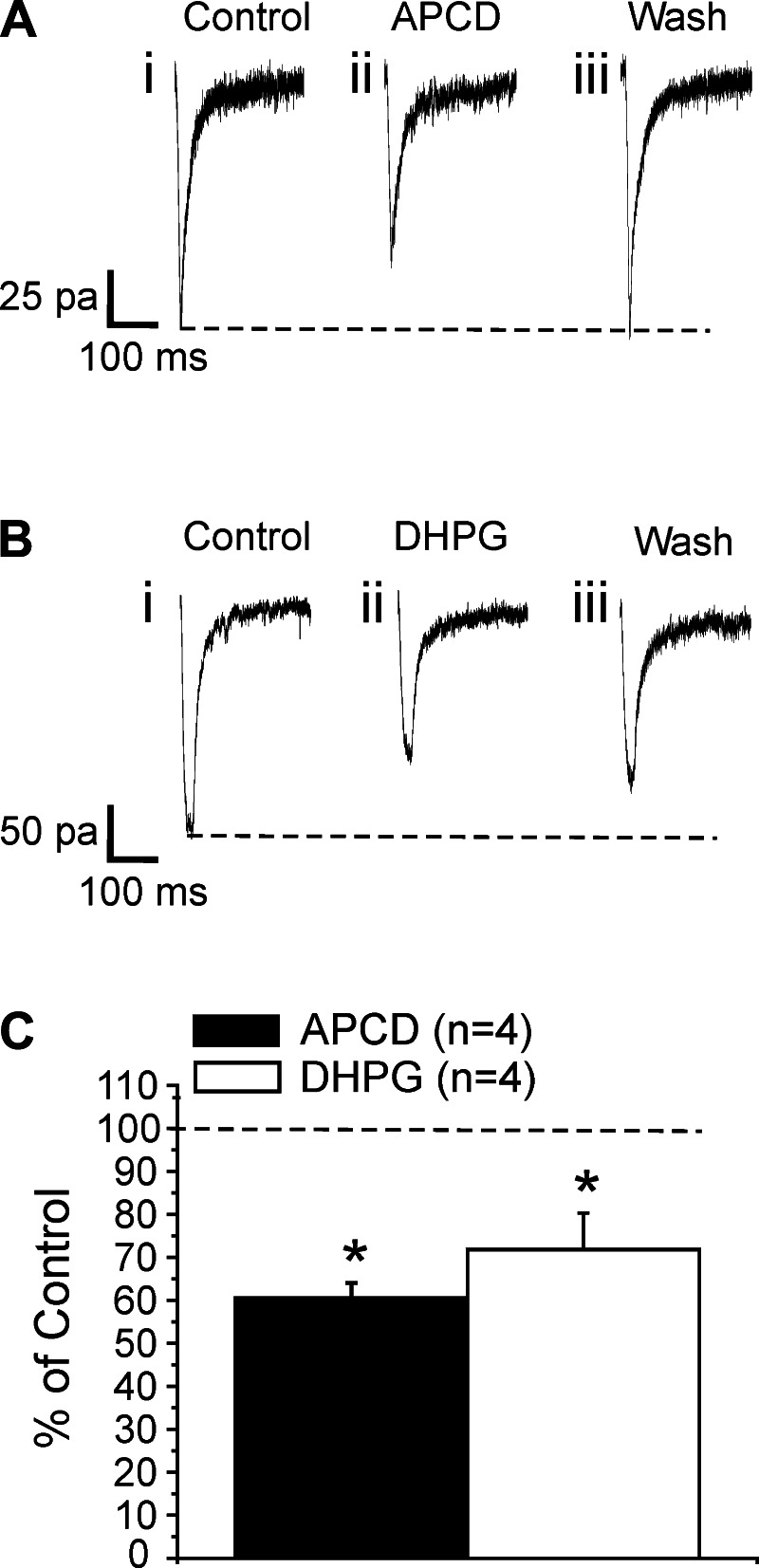Fig. 8.
Effects of 4-aminopyrrolidine-2,4-dicarboxylate (APCD) and 5-dihydroxyphenylglycine (DHPG) on direct photostimulation of neurons in layer 4 of V1. Shown in A and B are traces recorded in a layer 4 cell of V1 evoked by direct photostimulation in experiments in which synaptic transmission was blocked by a low-Ca2+ and high-Mg2+ bathing medium. A: bath application of the group II mGluR agonist APCD notably reduced the amplitude of the evoked responses (i vs. ii), and this effect disappeared after the drug was washed out (iii). B: bath application of the group I mGluR agonist DHPG also decreased the amplitude of the response (i vs. ii), and this effect somewhat persisted after washout (iii). C: graph showing the effects of APCD and DHPG on responses evoked with direct photostimulation. Amplitudes (means ± SE) are normalized to the mean of the baseline values. APCD and DHPG significantly decreased the amplitude of the EPSC (*P < 0.05, repeated-measures ANOVA for both agonists).

